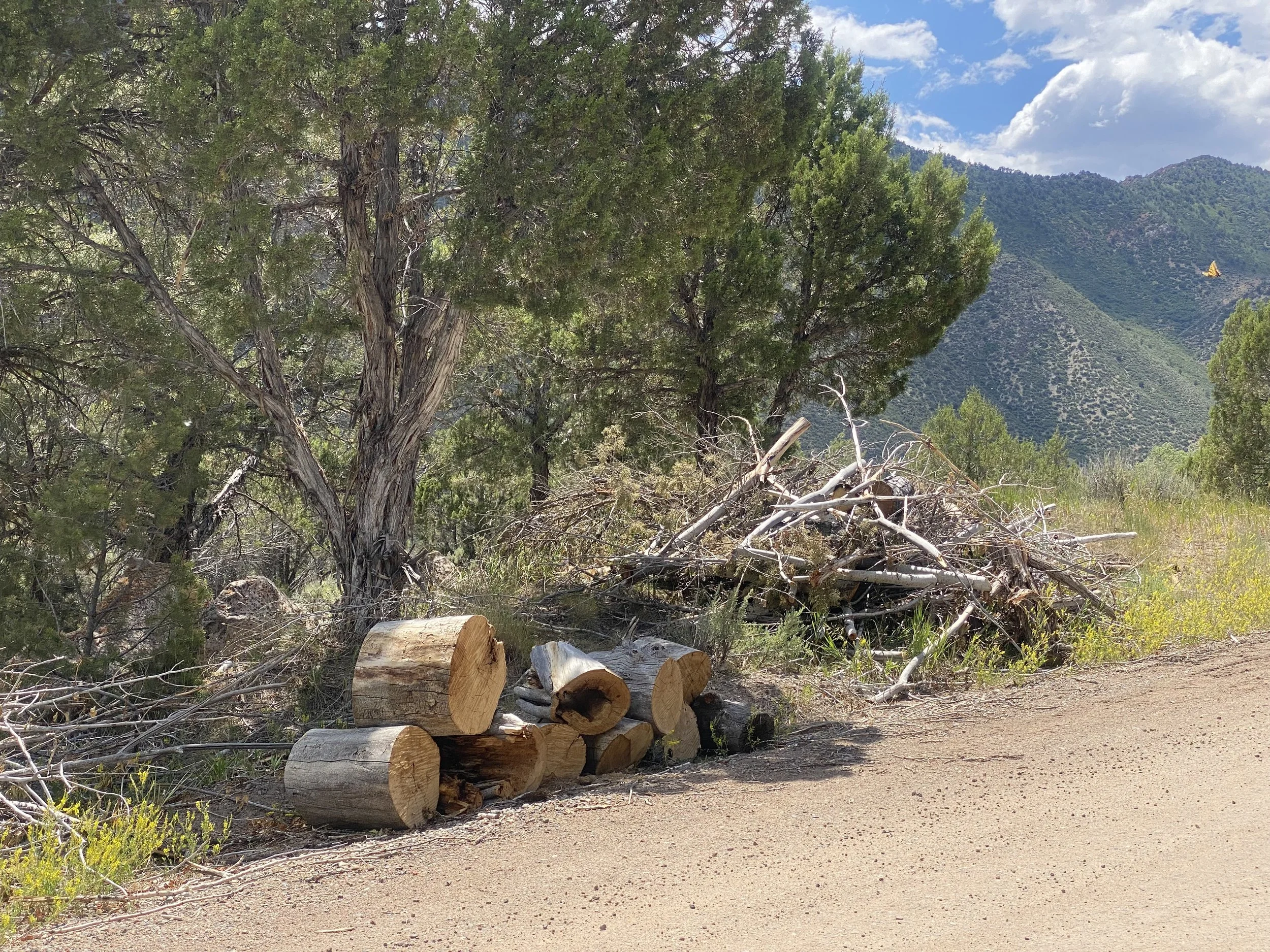Colorado River Wildfire Collaborative: Protecting Communities Through Cross-Jurisdicational Projects
Colorado has a long history of wildfires, and the risk is only increasing due to rising temperatures, persistent drought, and expanding populations. In particular, Garfield County and the eastern edge of Mesa County are among the highest-risk areas in the state, with a significant number of historical fire starts from various causes.
Years of drought have dried the landscape, while recent wet winters have contributed to increased wildfire fuel loads. Many wildfire mitigation areas also overlap with important wildlife habitat, including big game winter and transitional ranges. Pinon and juniper incursion into sagebrush ecosystems is affecting species habitat and reducing critical winter forage. Meanwhile, local firefighting resources are stretched thin, working to protect both communities and open spaces.
Glenwood Canyon Burn Scar - Run Off Curtesy Colorado Public Radio
Colorado River Wildfire Collaborative (CRWC)
In November 2022, local stakeholders along the Middle Colorado River corridor formed the Colorado River Wildfire Collaborative (CRWC) to tackle pre- and post-wildfire challenges. CRWC focuses on cross-boundary mitigation efforts to reduce wildfire intensity and lessen the impacts of post-fire flooding, debris flows, and infrastructure damage caused by hydrophobic soils.
More than 40 organizations are involved in the Colorado River Wildfire Collaborative (CRWC), working together to coordinate wildfire mitigation, response, and recovery efforts. The CRWC focuses on reducing burn severity and restoring ecosystems before and after wildfires through on-the-ground projects.
Partners including local towns, fire districts, counties, the U.S. Forest Service, Bureau of Land Management, Colorado State Forest Service, and Colorado Parks and Wildlife—have signed a memorandum of understanding (MOU) to support cross-boundary collaboration.
CRWC projects support a region that relies on agriculture, tourism, recreation, energy, and public lands. The goal is to return forests to a more natural, resilient state while using adaptive management to reduce risks to vulnerable infrastructure.
Garfield County updated its Community Wildfire Protection Plan (CWPP) in 2022, with priorities to protect lives, infrastructure, the environment, and economic values—particularly in the wildland-urban interface (WUI). Mesa County followed with an update in 2023, identifying local hazards and strategies to reduce wildfire risk.
The Middle Colorado Watershed Council also completed a Wildfire Ready Action Plan to identify community values at risk from post-fire flooding and debris flows.
MCWC joined Bureau of Land Management, Colorado River Fire Rescue, US Forest Service, and Colorado State Forestry in May to discuss future project work.
Planning and Coordination
Garfield County updated its Community Wildfire Protection Plan (CWPP) in 2022, with priorities to protect lives, infrastructure, the environment, and economic values particularly in the wildland-urban interface (WUI). Mesa County followed with an update in 2023, identifying local hazards and strategies to reduce wildfire risk.
In May 2024, the wildfire collaborative project committee including representatives from BLM, Colorado River Fire Rescue, U.S. Forest Service, Colorado State Forestry, and MCWC visited Wallace Creek and Grass Mesa to discuss current and future mitigation projects.
The wildfire collaborative project committee spent a day in the field in May 2024 discussing projects at Wallace Creek and Grass Mesa in Garfield County.
Proposed Wildfire Mitigation Projects
The CRWC will compile information on each of these projects for mitigation strategy that includes researching land ownership and identifying utility service areas and infrastructure and water supplies. Projects will be prioritized based on need and partnership engagement.
CRWC future mitigation projects:
Wallace Creek & Table Top Mesa
Alkali Creek and De Beque Ridge
500 acres of Grass Mesa
150 acres near Helmer Gulch
2,500 acres in the Battlement Mesa Area
Mitigation work on leased lands near Conn Creek
Wild Horse Habitat Northwest of De Beque
South Rifle Habitat Enhancement Project (South Side of the Colorado River)
CRWC - Elk Creek Drainage June 2025
CRWC - Elk Creek Drainage Project Committee June 2025





